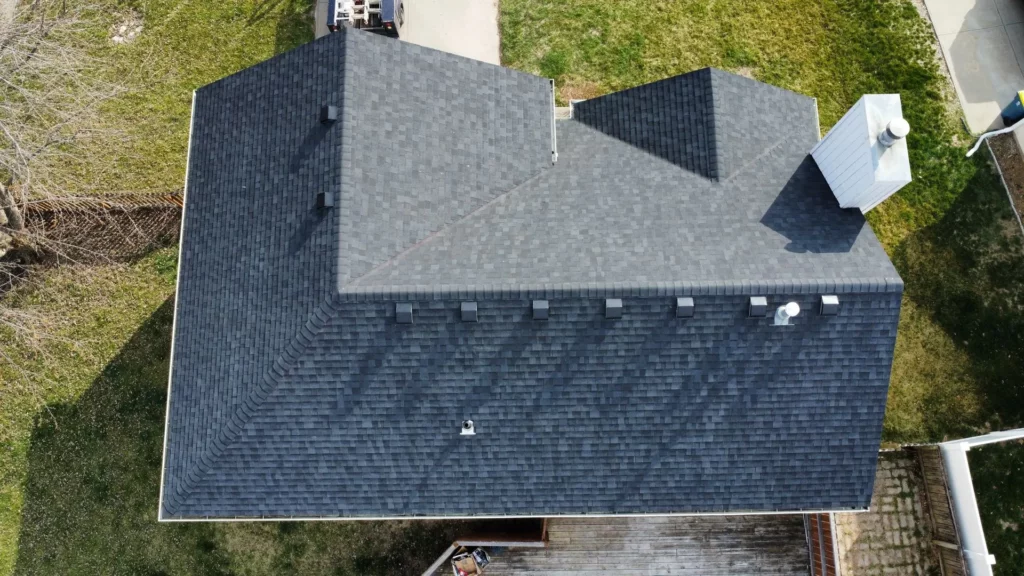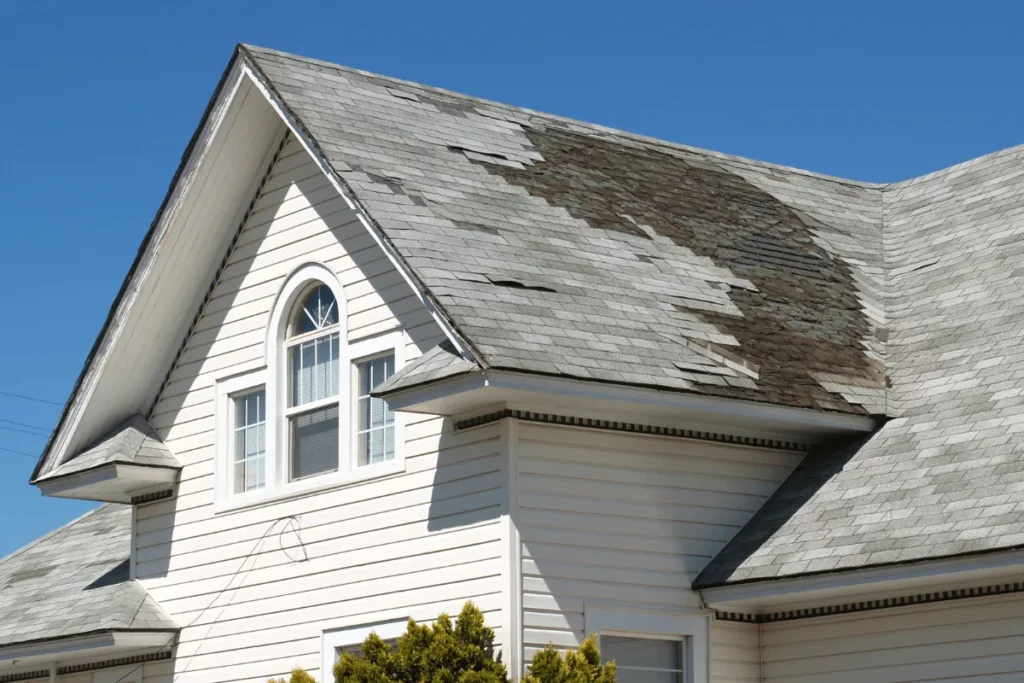When planning a roof replacement for your Kansas City home, you’ll face numerous decisions – from choosing a contractor to selecting materials. Among these choices, shingle color might seem purely aesthetic, but it actually impacts your home in several significant ways.
At Cloud 9 Roofing, we help homeowners understand how this often-overlooked decision affects both the appearance and performance of their roofing system.
Shingle Color’s Effect on Curb Appeal and Home Value
Your roof comprises roughly 40% of your home’s visible exterior, making it a dominant feature that significantly influences curb appeal. The right shingle color can enhance your home’s architectural style and complement its existing color palette.
For traditional Colonial or Victorian homes throughout Brookside and Hyde Park, classic colors like charcoal gray or deep brown often preserve historical authenticity. Meanwhile, contemporary homes in Leawood or Overland Park might benefit from modern color options like slate blue or weathered wood blends.
Real estate professionals consistently report that thoughtfully selected roofing colors can increase property values by enhancing overall aesthetic appeal. When your roof complements your home’s exterior elements, it creates a cohesive look that potential buyers notice and appreciate.
[Related: How Long Does a Roof Last?]
Shingle Color’s Energy Efficiency Considerations
Beyond aesthetics, shingle color directly affects your home’s energy performance. Darker shingles absorb more heat from the sun, while lighter colors reflect solar radiation. This difference can significantly impact your home’s temperature and energy consumption.
In Kansas City’s climate, with our hot summers and cold winters, this consideration becomes particularly important:
Dark Shingles (Black, Dark Brown, Dark Gray)
- Absorb more heat, potentially raising attic temperatures by 20-40°F
- Can help melt snow and ice more quickly during the winter months
- May increase cooling costs during the summer
Light Shingles (Light Gray, Beige, Tan)
- Reflect more sunlight, reducing heat absorption
- Can lower attic temperatures by 50-60°F compared to dark shingles
- May reduce summer cooling costs by 7-15%
Many Kansas City homeowners choose medium tones that balance these seasonal benefits, providing moderate heat absorption in winter while not excessively heating the home during summer.
Neighborhood Considerations for Shingle Color
While personal preference matters, it’s also worth considering how your roof will look alongside neighboring homes. Most Kansas City neighborhoods don’t have strict regulations about roofing colors, but some homeowners associations do maintain guidelines to ensure community aesthetic cohesion.
Even without formal restrictions, a roof that dramatically contrasts with surrounding homes might appear out of place. We often recommend driving through your neighborhood to observe the color palette of existing roofs and then selecting a shade that complements rather than clashes with the overall look of your street.
Shingle Color and Architectural Compatibility
Different architectural styles traditionally pair better with certain shingle colors:
- Craftsman/Bungalow (common in Waldo and Brookside): Earth tones like brown, green, or clay complement the natural materials and organic feel
- Ranch (prevalent in Prairie Village): Medium grays, browns, or weathered wood blends enhance the horizontal lines
- Tudor (found in Mission Hills): Dark browns or blacks accentuate the distinctive steep roof lines
- Modern (emerging in downtown lofts and new developments): Sleek grays, blacks, or even blue-gray tones complement contemporary design
Shingle Color Longevity and Maintenance Considerations
Lighter-colored shingles generally show algae streaks and discoloration more readily than darker options. While this doesn’t affect performance, it can impact appearance over time. Many premium shingles now include algae-resistant technology, which is particularly valuable for lighter-colored roofs in Kansas City’s humid climate.
Darker shingles may show granule loss more visibly as they age, but they typically hide dirt and minor discoloration better than lighter alternatives.
[Related: When to Replace Your Roof]
Making Your Decision on Shingle Color
When helping Kansas City homeowners select shingle colors, we recommend:
- Consider your home’s fixed elements – brick color, stone accents, and siding that won’t be changing
- Look at large samples – small color chips don’t adequately represent how a color will look across your entire roof
- View samples in different lighting – colors appear differently in morning light versus afternoon sun
- Use visualization tools – many manufacturers offer digital tools to preview colors on homes similar to yours
At Cloud 9 Roofing, our team will work with you to figure out your needs. We consider your home’s architecture, existing colors, neighborhood context, and energy efficiency goals to recommend shingle colors that will look beautiful and perform optimally in Kansas City’s climate.
The Bottom Line on Shingle Color
Shingle color absolutely matters – both for aesthetic reasons and practical performance. The right choice enhances your home’s appearance, complements its architectural style, potentially improves energy efficiency, and maintains neighborhood harmony.
If you’re considering a roof replacement for your Kansas City home, contact Cloud 9 Roofing for a consultation. Our experienced team will help you navigate all aspects of your roofing project, including finding the perfect shingle color to protect and beautify your home for years to come.


